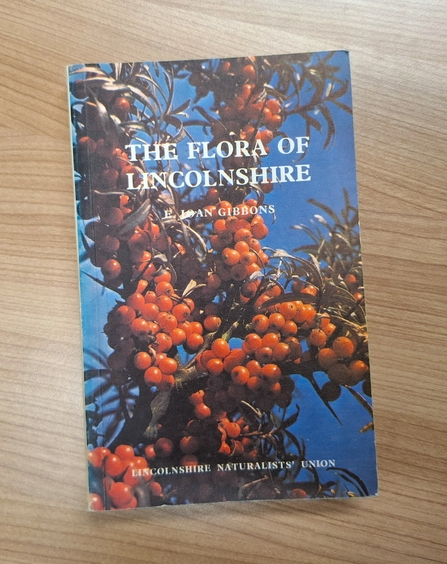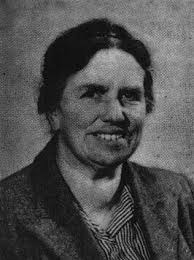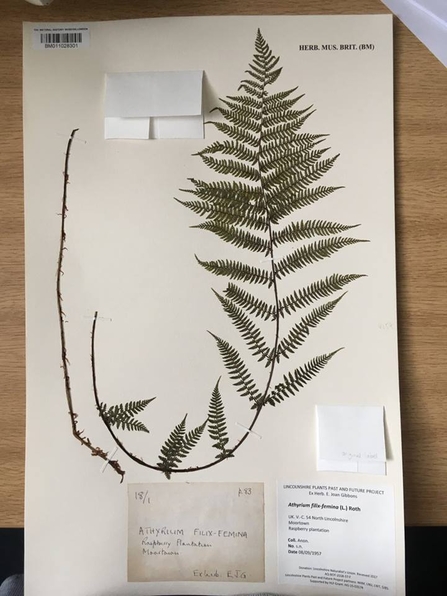Botanists, and all nature lovers, today owe a debt to Joan Gibbons for her work to produce a Flora for Lincolnshire. Published in 1975 it provides a unique view of the region’s flora. It was also of some historical significance as the first full Flora of an English county to be written by a woman and the county Flora that covered the largest single area.
Fifty years of the Flora of Lincolnshire
Kieron Huston

With over 300 pages, the Flora of Lincolnshire outlines the history of botanical recording in the county, gives description of the geology and habitats, and provides accounts of the status and distribution of every plant species.
Joan Gibbons was born in Essex in 1902 and moved to Lincolnshire when she was five years old. In the rural surroundings of Holton-le-Moor near Caistor, she soon developed an interest in wildflowers and plants, attending her first Lincolnshire Naturalists’ Union (LNU) meeting with her father when she was just eleven.
Joan joined the LNU when she was 18, became Botanical Secretary in 1936 and President, for the first time, in 1939 while she was still in her thirties. Her Presidential Address on 25 November 1939 was titled ‘Notes on the Lincolnshire Flora’ and quoted “I should like to plead with all wild flower lovers not to exterminate rare plants. Do not even pick one flower unless there are at least five others of the same kind in sight.”
Her most significant achievement was writing The Flora of Lincolnshire. The LNU marked the publication by electing Joan as President for a second term, the first woman to be honoured in this way.

“The writing of this Flora has been a hard task for a botanist who feels more at home in the field than in writing. The many hours of research into old records in an attempt to make this, the first Flora for Lincolnshire, as complete as possible have not been as rewarding as the many years spent in field recording” wrote Joan in the preface to the book.
As well as being a valued member of the LNU, she was a founding member of the Lincolnshire Wildlife Trust Council. Her botanical knowledge was of enormous value to the Trust in establishing its early nature reserves and in publishing a Red Data Report for the county in 1988.
In 1967, Brian Tear – then the secretary of the newly formed Lincoln Area Group – wrote to Joan Gibbons about a portion of land near Saxilby. The group wanted to know about the flowers to be found there. Joan duly sent a letter. She knew the site and that it had been visited by a naturalist early in the century. She had not visited it herself but had viewed it from a passing train and she sent a long list of the species she saw.
“From that moment I became aware of her encyclopaedic knowledge of the flora of Lincolnshire” says Brian.
Brian also recalled her arriving at Trust Council meetings “often late Joan would arrive as chairman Ted Smith was about to begin agenda item 4. Attired in country tweeds and hat, she would be carrying all the Ordnance Survey maps for Lincolnshire. These would be opened on the table and council members appraised of the special species composition of a site. Often it had present the only greater spotted what-not in the county and must be saved by the Trust for future.”
In 1966, she had noticed a lake from a train window as she travelled to London. She tracked down the owner and arranged to take a look at the site. In a letter written in August 1966 she notes that she found: “a gravel spit running out into the water and growing with all the watery plants one could wish!” The lake was part of Deeping Lakes and was acquired by the Lincolnshire Wildlife Trust in 2003. Although by that time it was overgrown, with careful management most of the plants Joan recorded in 1966 have now returned.

Like many botanists, Joan Gibbons collected specimens of the plants she found. They were pressed and mounted for future study. These specimens were passed to the Natural History Museum as part of the #LoveLincsPlants project. Common lady fern, from the Joan Gibbons herbarium, was the 1,000th specimen to be added to the museum's database for the #LoveLincsPlants project.
The Flora of Lincolnshire and her herbarium specimens now safely stored, recorded and digitised, are ensuring that Joan’s legacy lives on.

